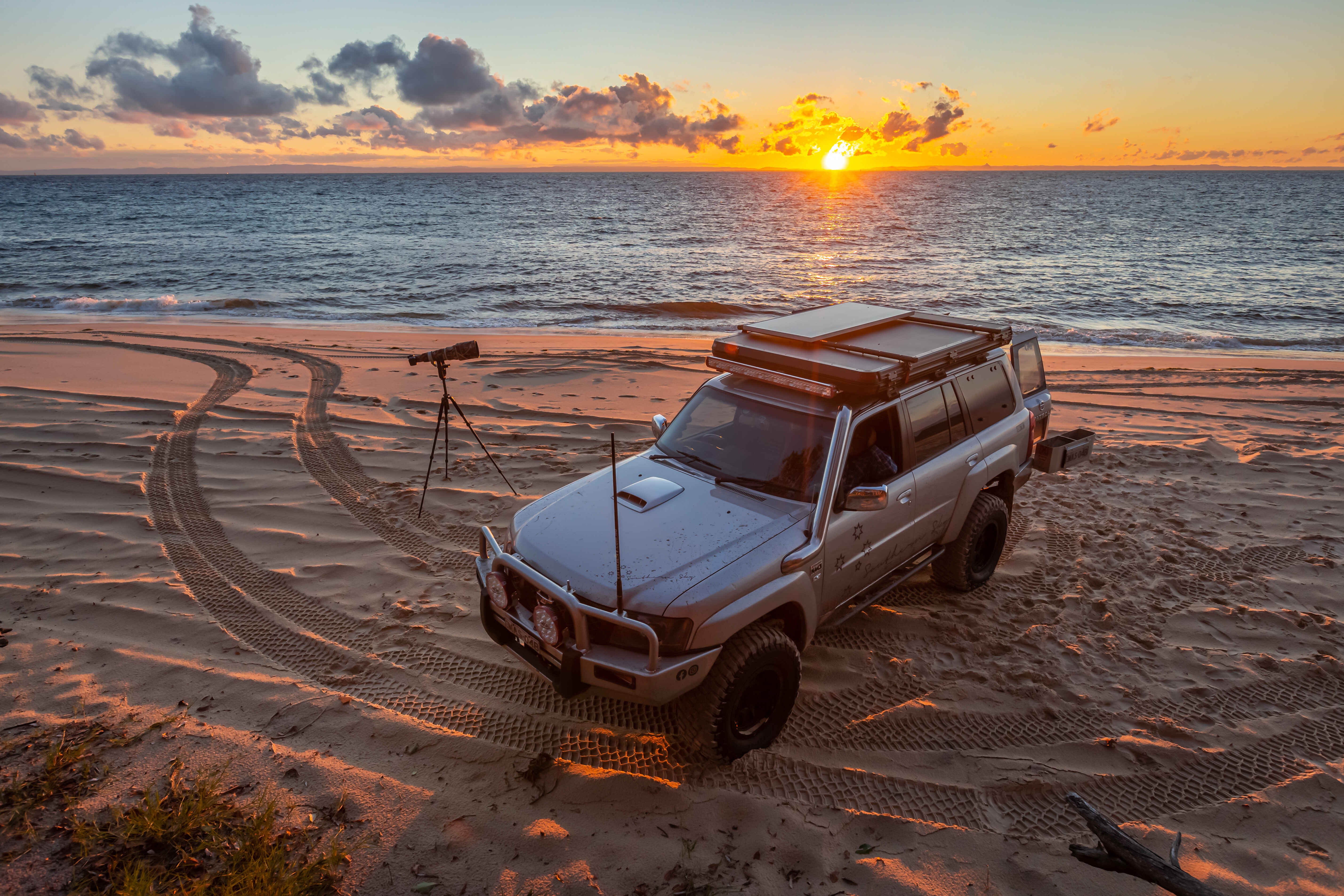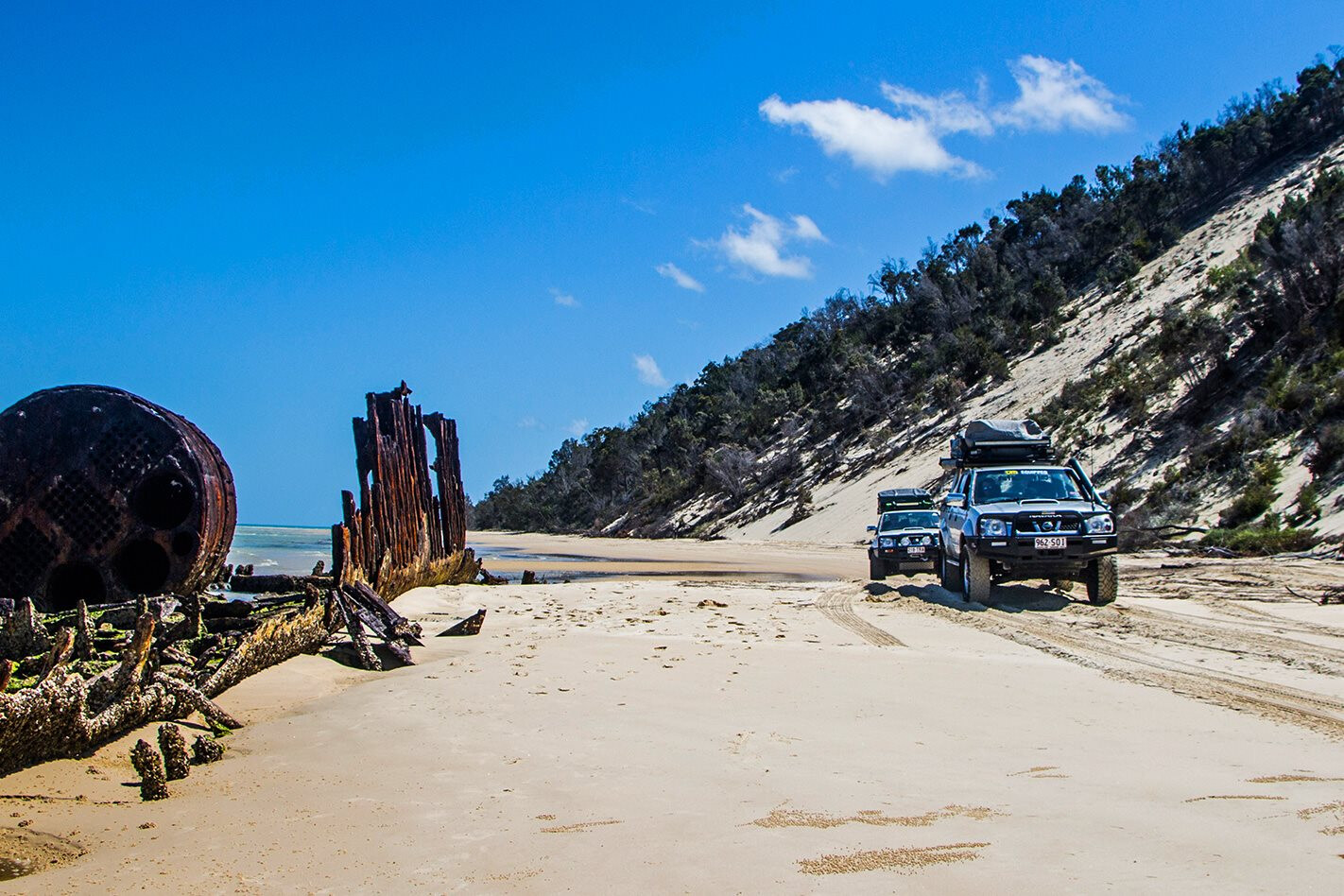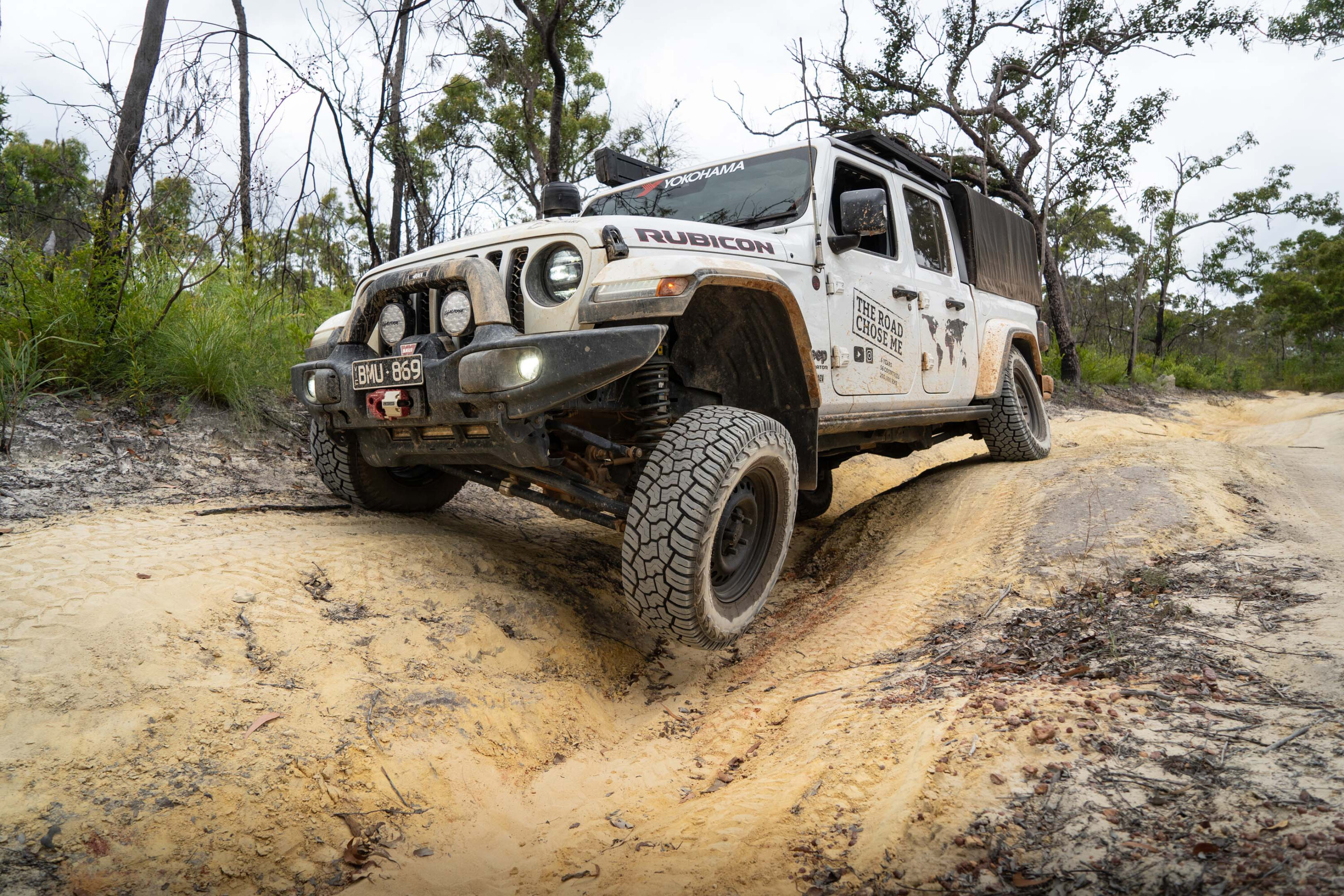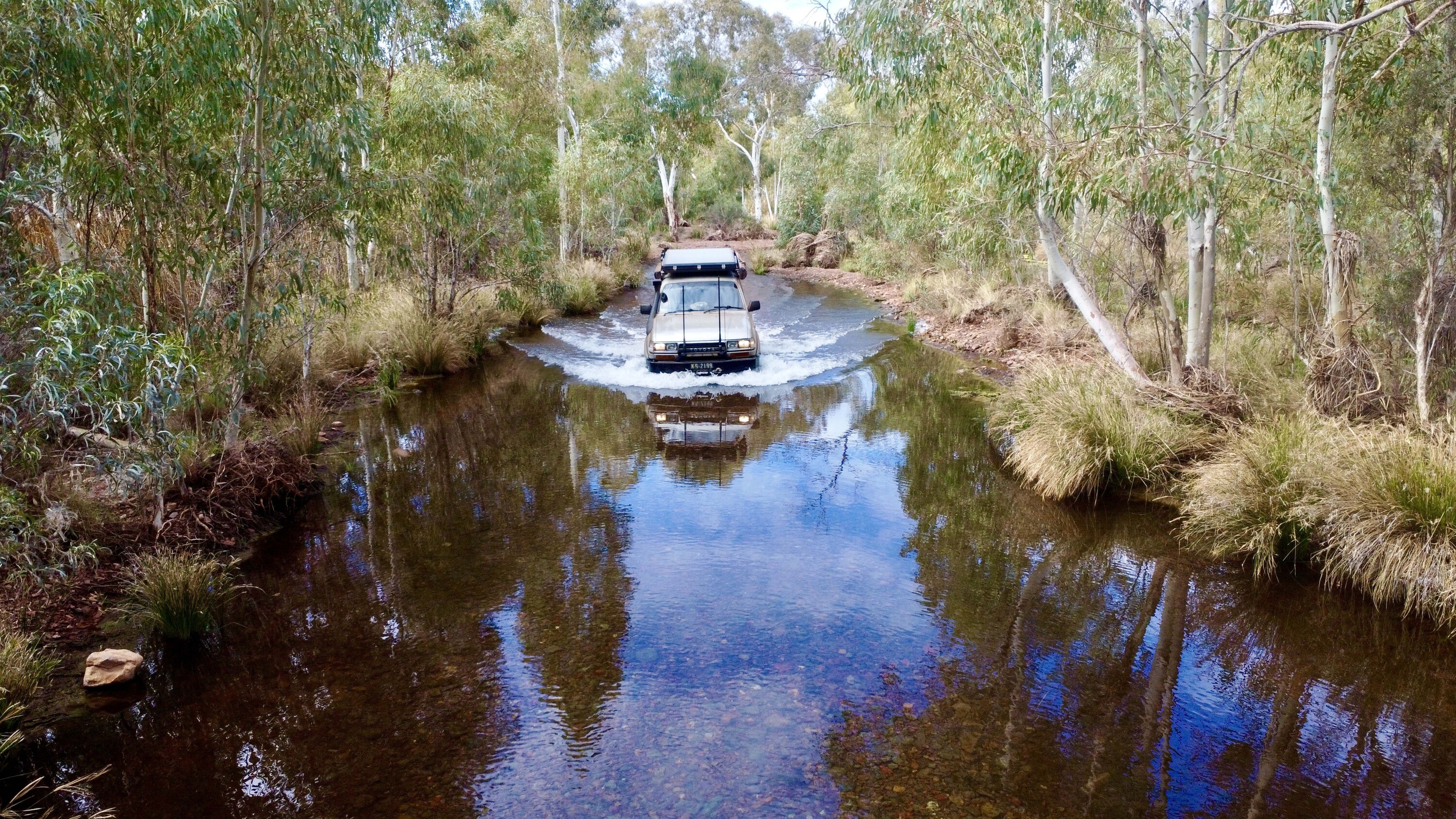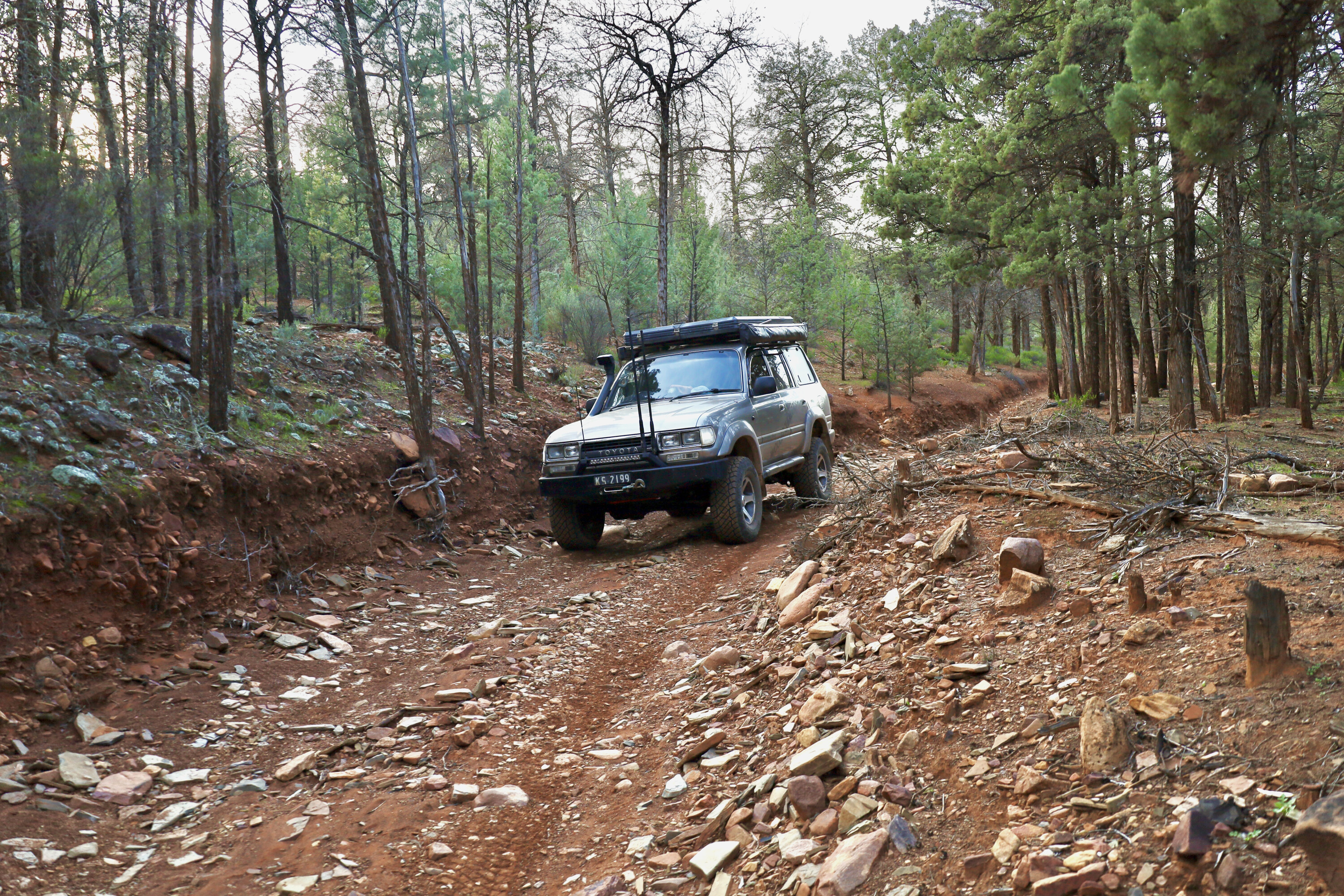Moreton Island is a 44km-long sand island located east of Brisbane. It is a 4x4er’s paradise with both protected and open-water beach driving and camping, all connected by several inland tracks which are awesome to drive.
It is well regarded for its fishing and marine mammal spotting; plus, of course, the 18 shipwrecks on the western beach.It is advisable to be completely self-sufficient; there are basic shopping and facilities, plus fuel if needed, but be prepared to pay a premium.
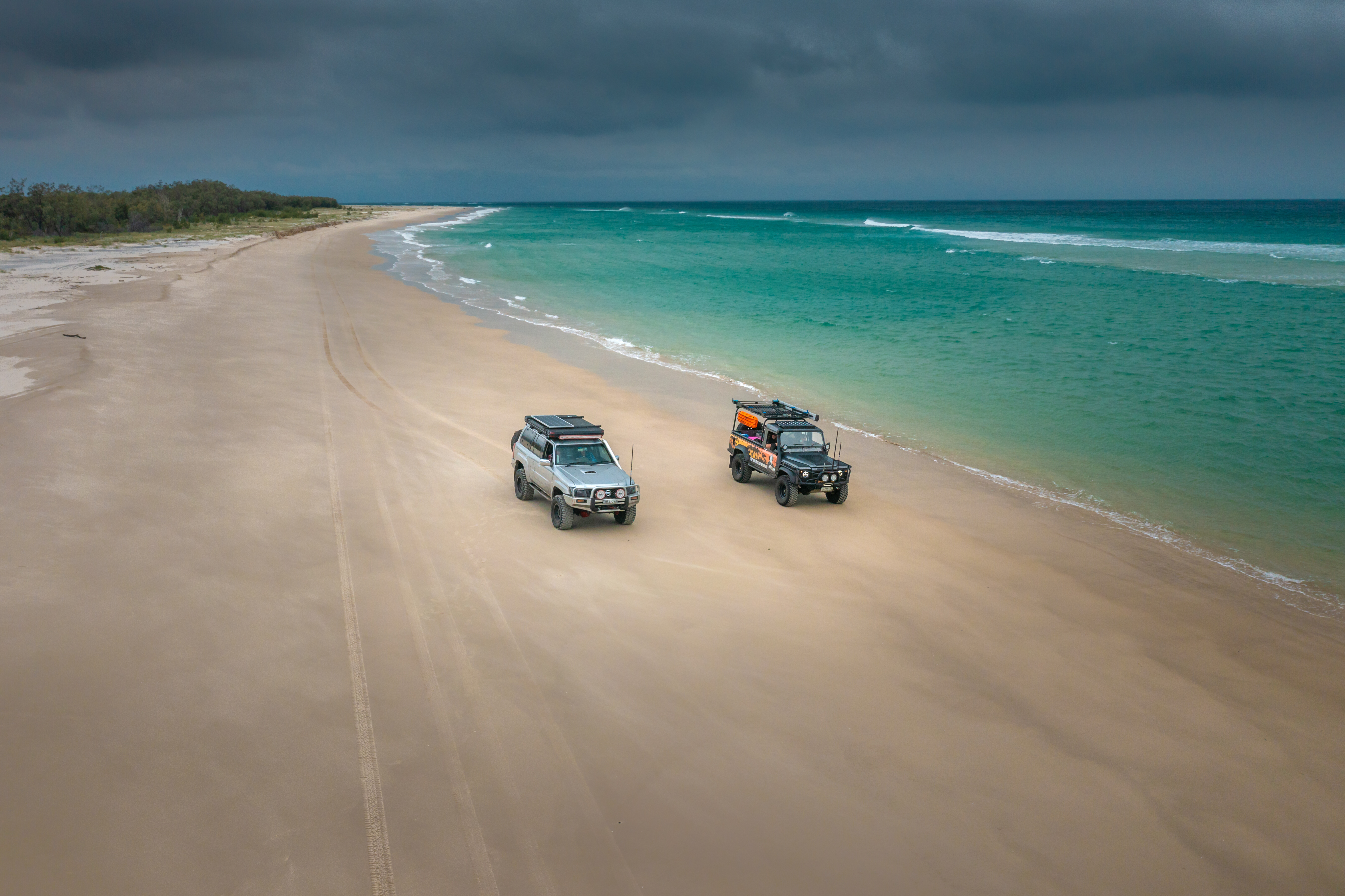
GETTING THERE
The MICAT ferry is the only way to get your rig over there. It leaves the mainland at the Port of Brisbane and drops you on the island just north of the Tangalooma Island Resort, right on the beach and in itself, is a pretty cool experience, especially for the kids. There are usually two services per day and it is wise to book ahead as early as possible, particularly in the summer months and school holiday periods.Booking the barge is easy on the Moreton Island Adventures website, and from there you can follow a link to permits and camp booking, it’s actually really simple.
CAMPING
There are five large campgrounds and five main camp ‘zones’ on the island. Each has its own distinct feel and varied facilities. Generally, the campgrounds are ideal for large groups and have long-drop loos and cold-shower facilities.
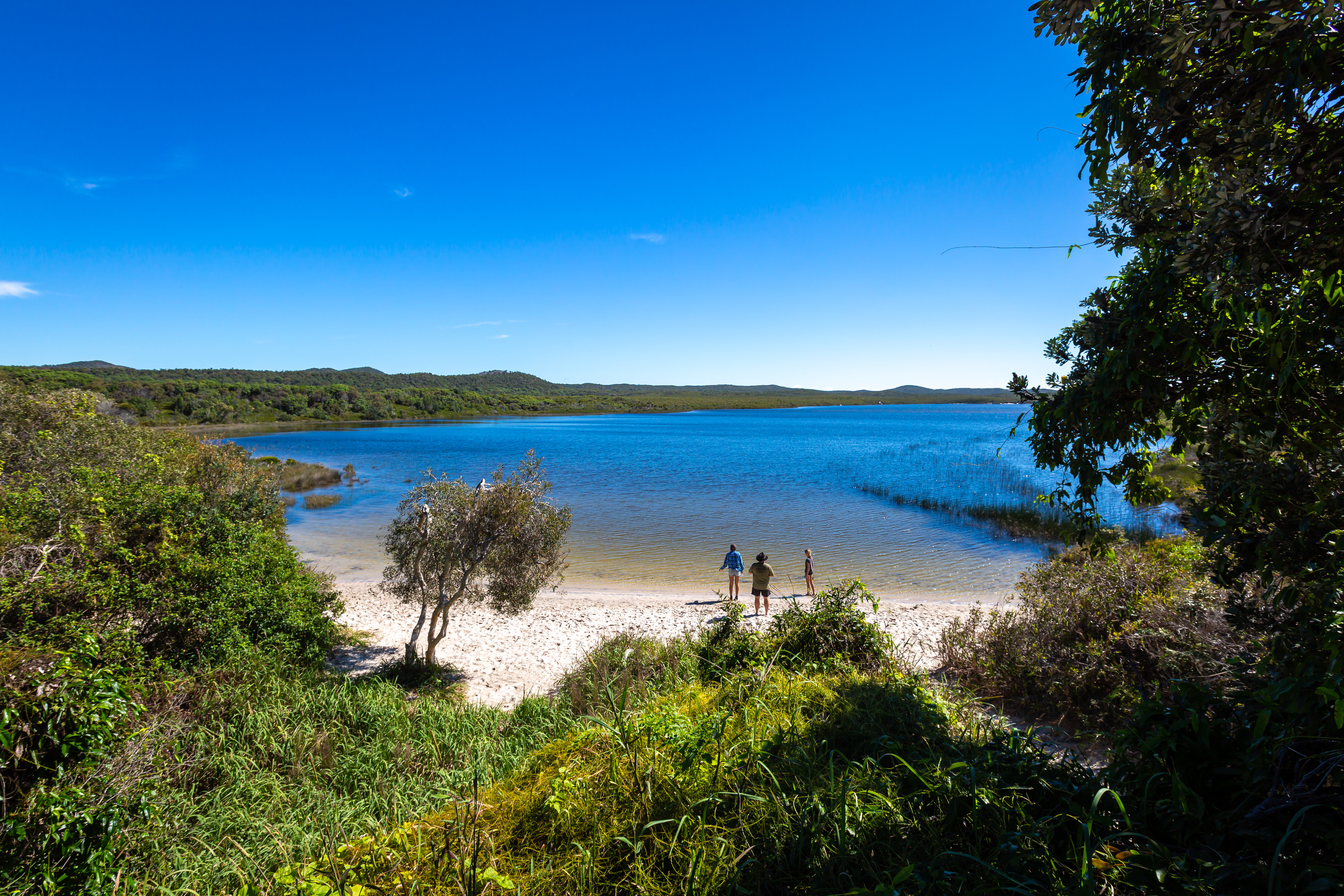
The camp zones are more secluded and consist of scattered sites, mainly along the beaches, they also lack any facilities. Whatever your choice though, rest assured you will not be disappointed, while there are some standout secluded ‘zone’ spots, all of them are stunning and have easy beach access.The advice here is to try and predict the prevailing winds for your time of travel to avoid the onshore winds. While you can book an area, there are no numbered sites, so it’s first in, first served.
DRIVING AND TIDES
The driving on Moreton is amazing, it’s pretty much all beach driving (apart from the sandy inland single-tracks) and who doesn’t love beach driving, right? From the barge you should point your rig north, it’s the gateway to all of the camps.
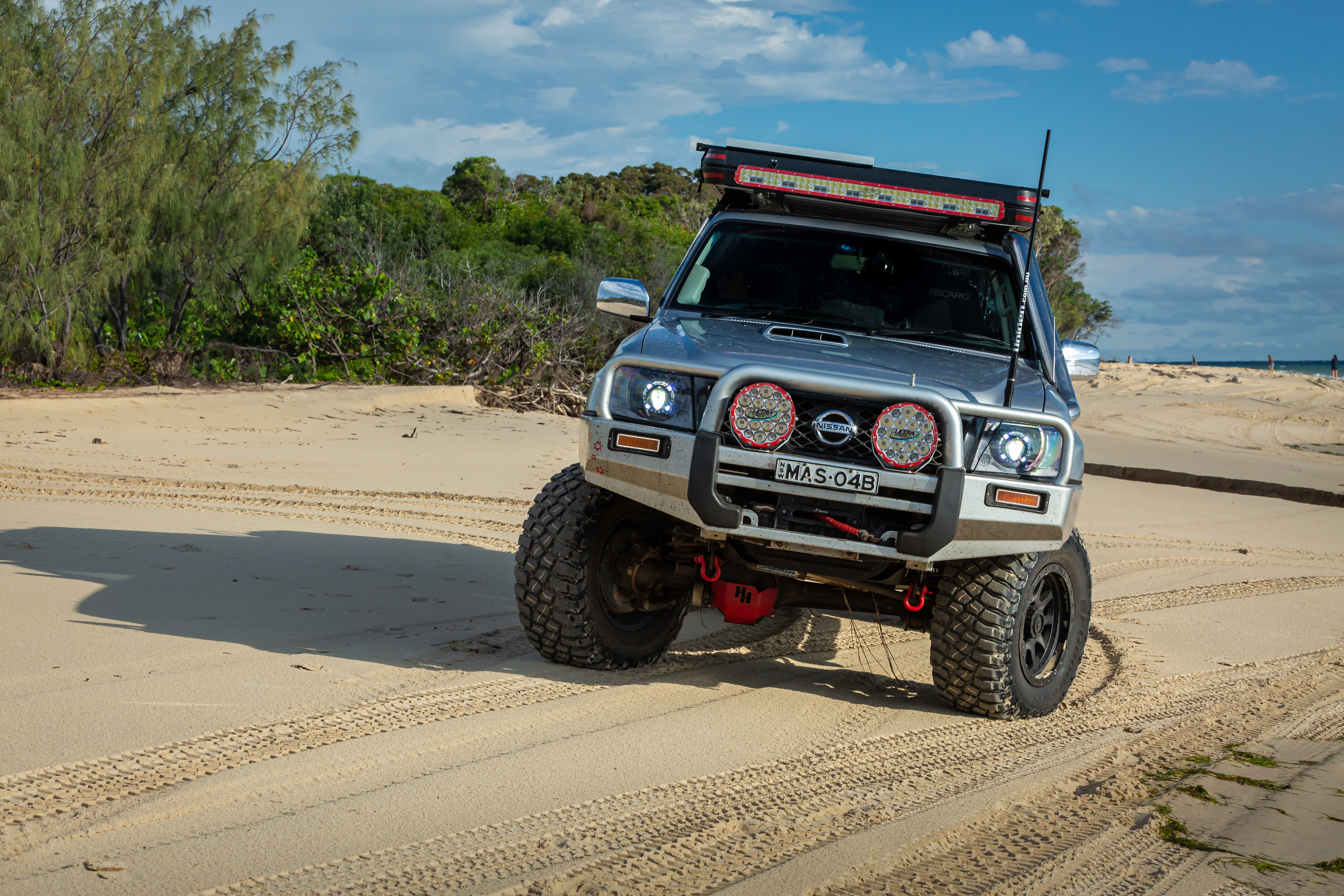
If you head the short distance south along the beach you’ll find the famous Tangalooma Wrecks (a great place to park up, swim and relax) a walk-in camp zone and then restricted access to the Tangalooma Island Resort and that’s about it (don’t worry, the resort is secluded and does not interfere with us 4x4ers).So, head north if you want to make camp and follow the signs or your maps to your booked area and look out for the turn right to cross the island if that’s where you are headed – it’s an easy track to miss, otherwise continue along the beach north to find camp and adventure.
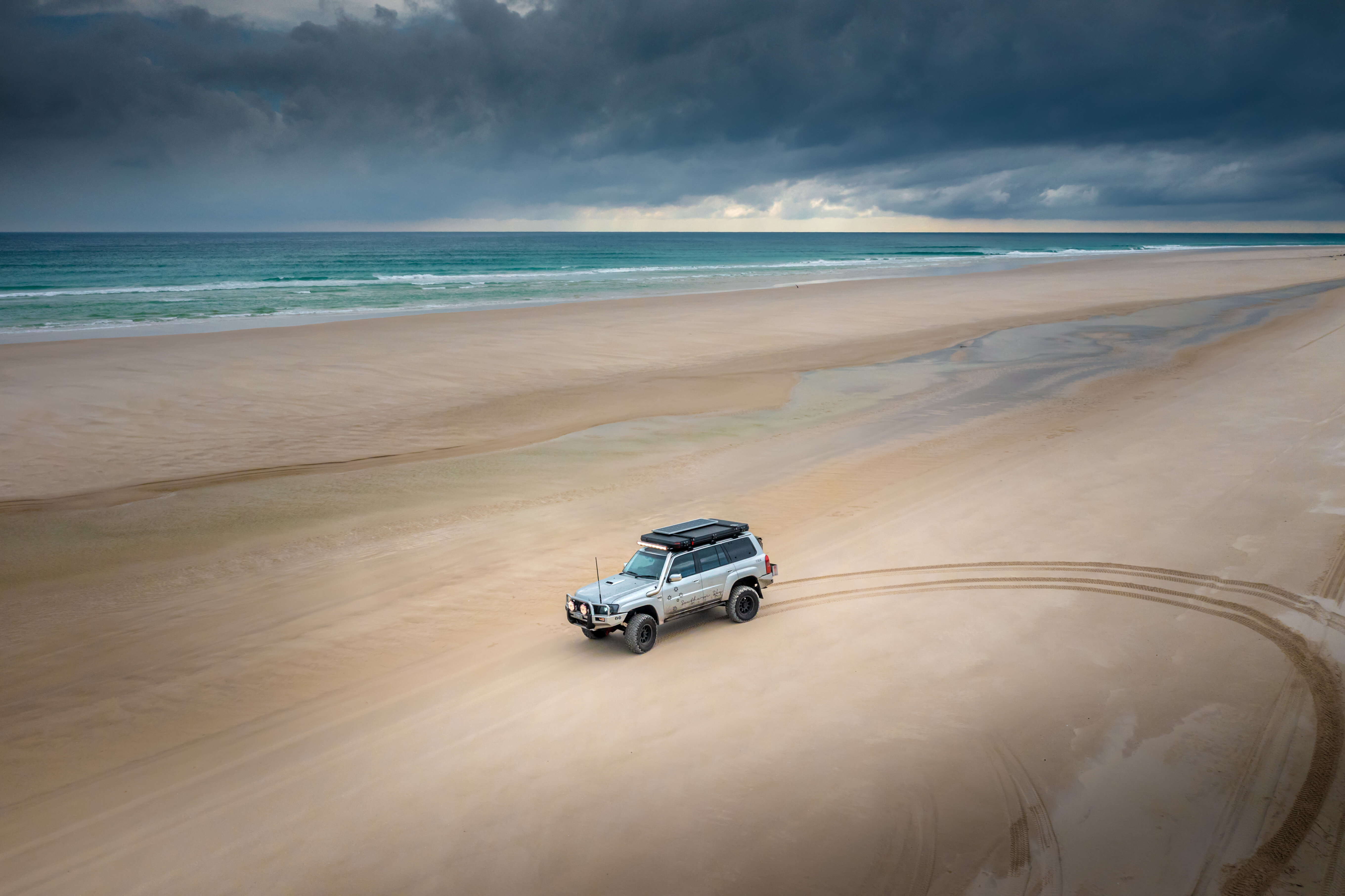
Being able to drive the beaches is very tide dependant – there’s not a great deal of sandy real-estate to drive upon, especially on the west coast that faces Brisbane, so the best time to drive is the two hours either side of the low tide. Outside of that, you find yourself with very little or no sand to drive upon and rest-assured, it is soft stuff up above the high-tide mark if it is even available.Water runouts are abundant on the west coast and they can be very deep and steep-sided, especially near the high-tide mark. It really does pay to drive cautiously and look well-ahead to avoid disaster. Hitting a runout at speed will ruin your trip instantly.Airing down is a must to avoid bogging and create a more comfortable ride – 15 to 24psi (depending on your vehicle weight and tyre construction) will have you negotiating the island with ease.

EAST OR WEST: WHICH IS BEST?
Choosing which side to camp upon really comes down to two things: weather and facilities.It is not enjoyable to have camp constantly bombarded by strong onshore winds nor have your body sand-blasted, so if the weather looks gusty head for the sheltered or lee side, but in the heat of summer it may be desirable to have cooling onshore winds, so it really is seasonally dependant.
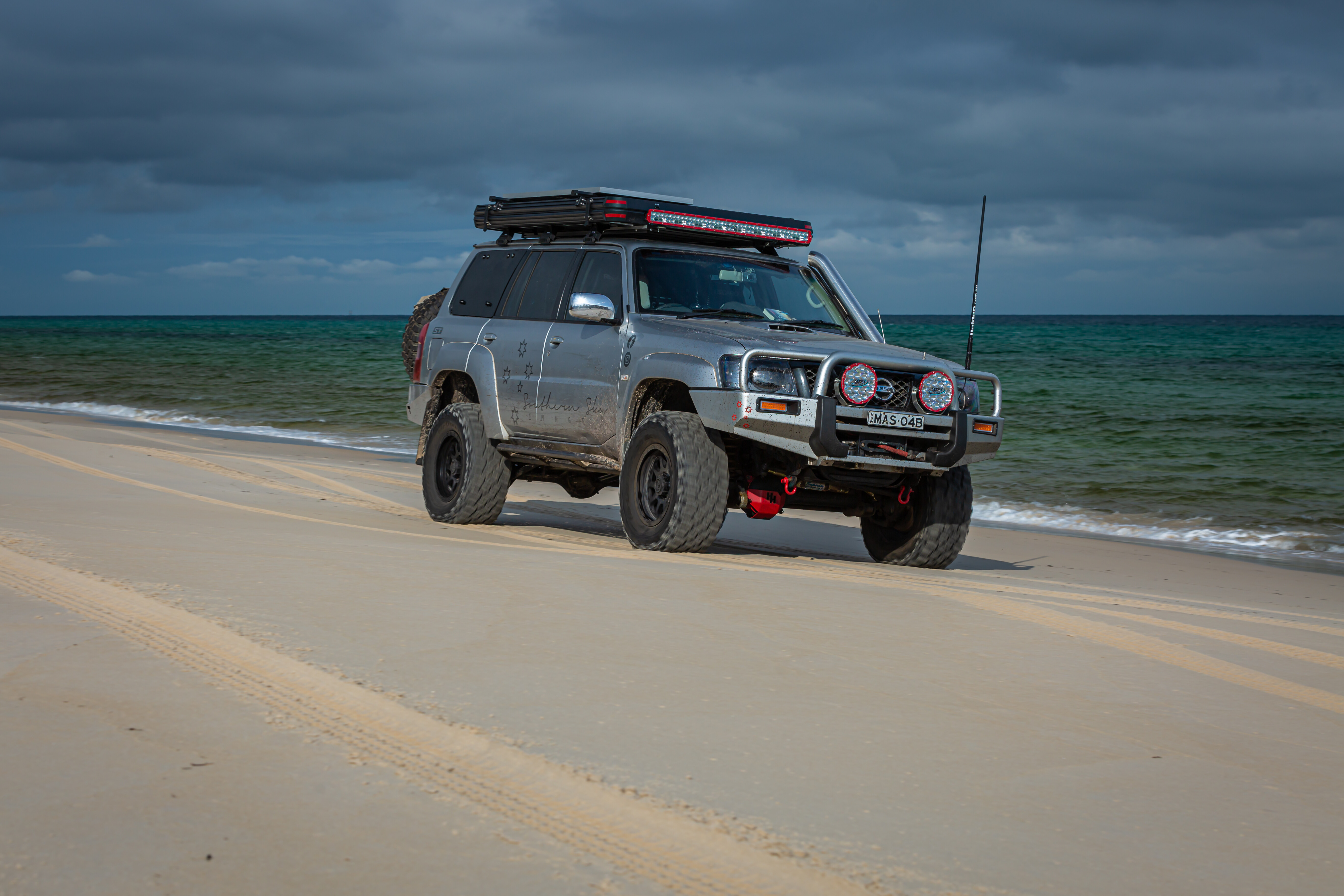
If you want close proximity to facilities then the west is best, the east coast is largely devoid of regular facilities with only Blue Lagoon having showers.If those two things are not that important to you, then you may consider that the west coast waters are more protected and calm, while the east coast is one very long surf beach with abundant gutters and rips. It is much nicer and easier to drive the east.
HOW ABOUT NORTH AND SOUTH?
There are some lovely camps up north but they are tucked inland a little, also you will need to allow more time to travel to and from the barge and keep an eye on tides while travelling.Down southwest there are some small camps tucked into the shoreline, but the caveat here is that you will be landlocked at high tide plus it is a mangrove area so the likelihood of midges (or sandflys) is high. Additionally, there is very little protection from southerly winds.
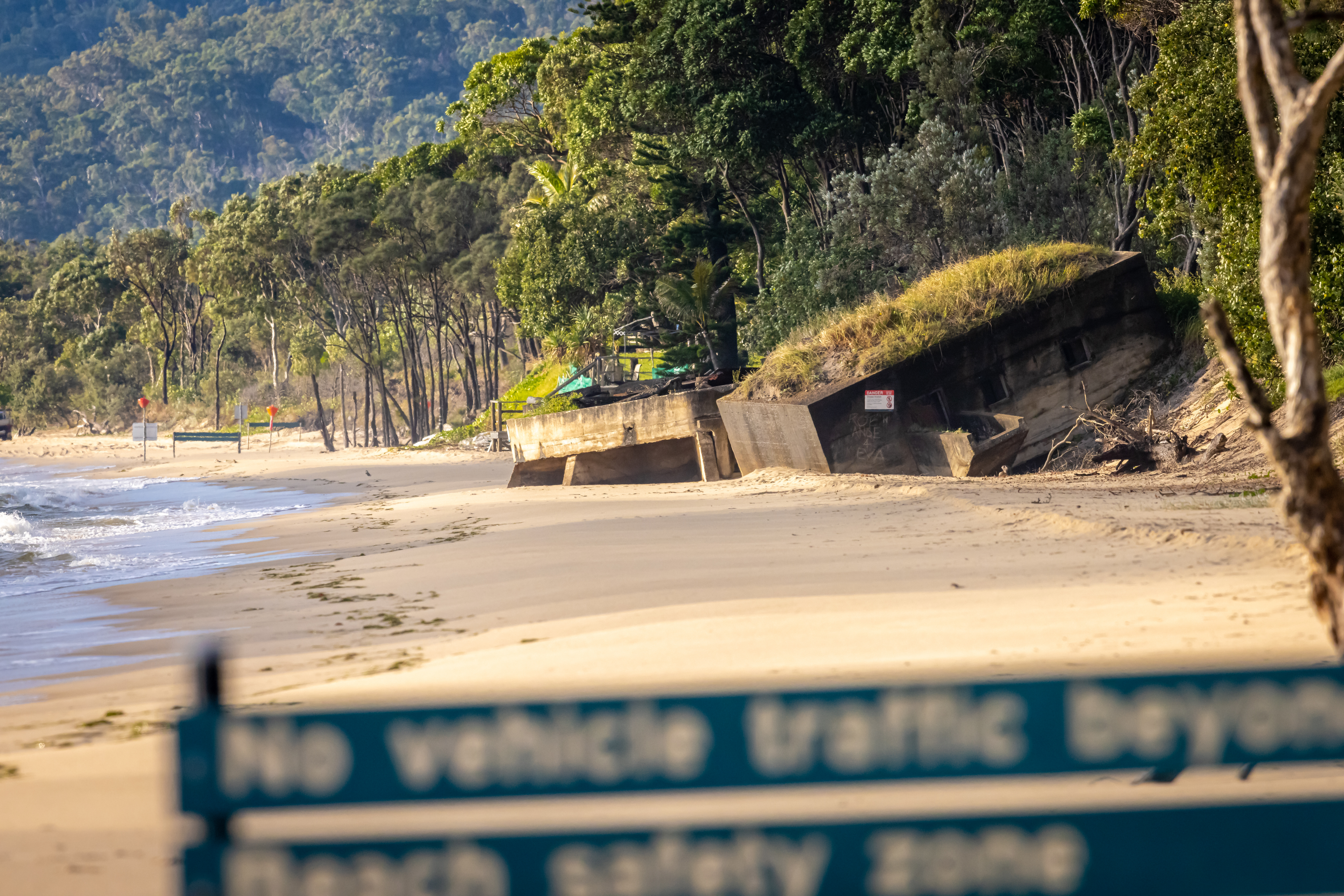
SHOPPING AND FUEL
There are two small communities on the island, Bulwer (north) and Kooringal (south) with facilities: The Castaways and The Gutter Bar respectively. Both offer basic goods and alcohol but The Castaways has much more variety and is the only place on the island to obtain fuel.
Be aware that it is possibly the most expensive fuel in Australia, so it’s best to fuel up at the Port of Brisbane near the MICAT barge terminal before you leave.If you are looking for a cooked meal both have good food on offer, but The Gutter Bar, as its name implies, is also a bar and a great place to enjoy a relaxed atmosphere with friends and family.
RUBBISH AND CAMPFIRES
There are plenty of dump points across the island, so there is simply no excuse to leave your rubbish behind.You are allowed to have campfires on Moreton Island but as always, there are a few sensible rules:• Campfires are only permitted in fireplaces and firepits at certain campsites.• Fires must be monitored at all times and never left unattended.• You must bring your own firewood to the island or purchase it at The Castaways; harvesting it on the island is prohibited.
WILDLIFE
Wildlife is a highlight of the island with plenty of birds, reptiles and aquatic life to be seen. One species that is not present is the dingo. Unlike the similar island, Fraser, you do not have to worry about potential interactions with these canines on Moreton.
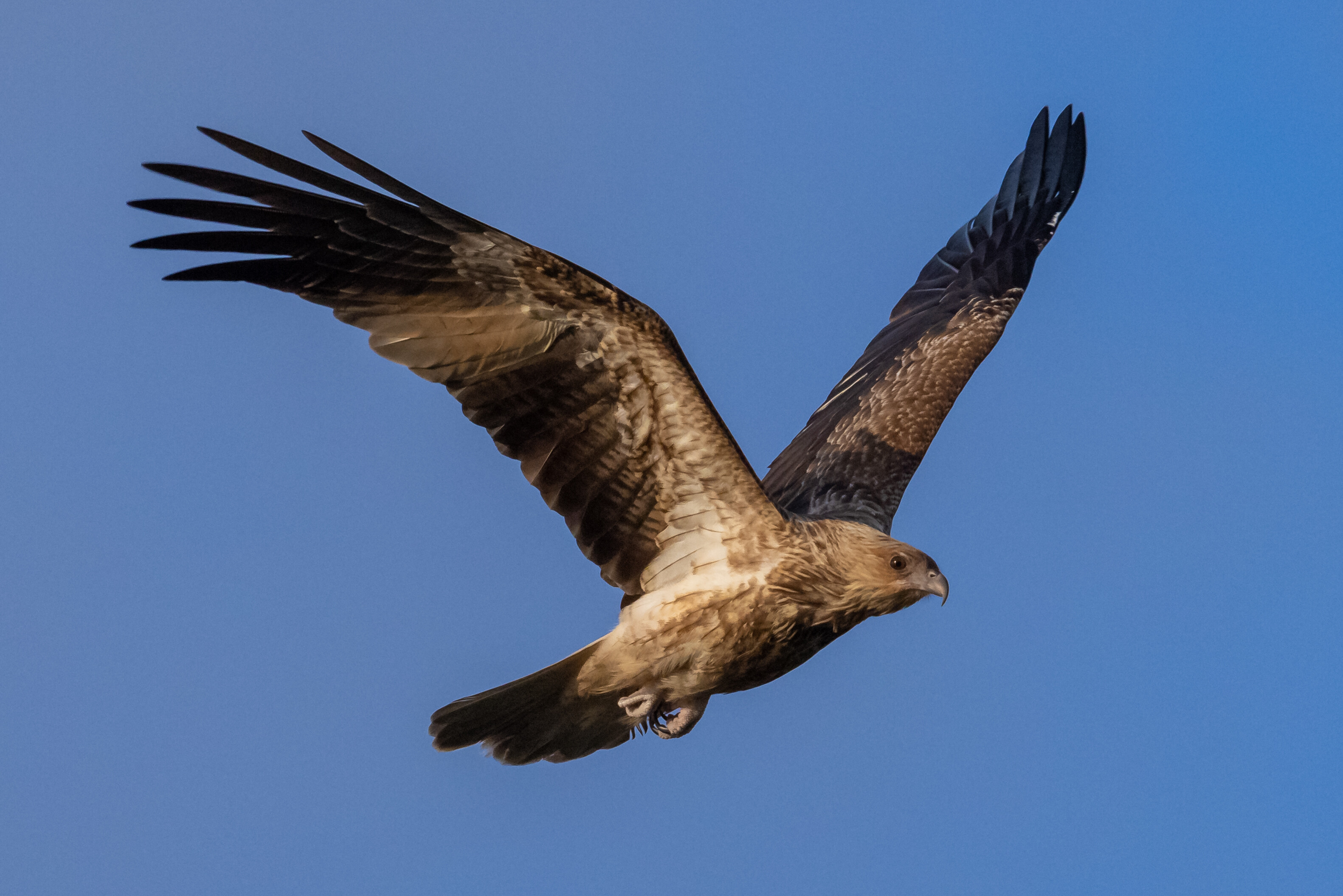
WORTH THE EFFORT?
You bet it is! Moreton Island is a fantastic experience no matter your age or set-up. One tip though, be prepared to do it all again, because once you get a taste, you will certainly be back for more.
TOP 5 THINGS TO DO
TANGALOOMA WRECKS Fifteen work boats and barges were scuttled on the west coast to create a breakwall and are now a snorkeller’s and diver’s paradise.THE GUTTER BAR A great place to enjoy a relaxed, beachy vibe with friends and family.LIGHTHOUSE The 23m Moreton Island Lighthouse was the first built in Queensland back in 1857 with convict assistance.SAND HILLS The Big and Little Sand Hills are stunning dunes of white sand stretching across the southern tip of the Island from east to west.CHAMPAGNE POOLS This spot gets its name from the sparkling ‘champagne’ effect of ocean waves crashing over the natural break wall.

